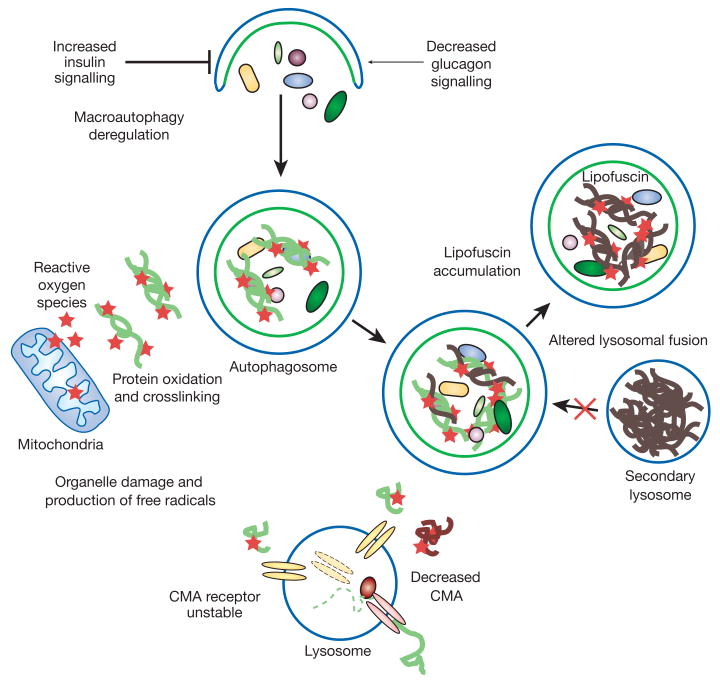Figure 4. Autophagy and ageing.
Defective lysosomal function has been reported in almost all tissues of ageing organisms, from nematode worms to mammals, and both macroautophagy and CMA activity decrease with age56. Problems in the regulation and execution of macroautophagy contribute to its functional decline during ageing57. Upregulation of macroautophagy by increased levels of glucagon in serum (that is, between meals) is lost in older organisms, possibly owing to persistently enhanced basal activity of the insulin receptor in response to the higher content of reactive oxygen species in ageing cells59. Also, accumulation of undigested material (lipofuscin) inside secondary lysosomes (for example, autolysosomes) interferes with their ability to fuse with autophagosomes and to degrade their cargo. Changes with age in the lysosomal membrane make the CMA receptor unstable. The age-dependent decrease in the levels of this receptor is responsible for low CMA activity in older organisms60. Some predicted consequences of the decline in autophagy with age are the inefficient clearance of damaged components, a poor response to stress, and a possible precipitating effect on disease.

